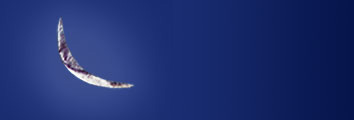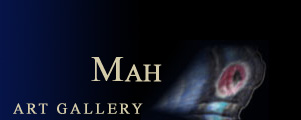|
|
| |
|
|
| |
|
| |
Biography
Mohamad Hossein Maher was born in Abadan, Iran, in 1957. Before he was admitted to Tehran’s College of Decorative Arts in 1975, he was the student of Shahab Moosavi, from whom he learned the principles of drawing. He furthered his knowledge of drawing and painting with prominent professors such as Hossein Kazemi and Bahman Boroojeni and started teaching at the same college after his graduation while he was studying for a graduate degree. Following the closure of all Iranian universities after the Cultural Revolution of 1980, he was unable to finish his degree. A few years later, after serving in the military, he left Iran to continue his studies in France. Leaving his studies unfinished, he returned to his homeland in 1986, immediately setting up an exhibition of his works that resulted from experiences in France.
Maher’s strong attachment to his hometown and the ancient ethnic beliefs and traditions of the Persian Gulf region inspired him to return to Abadan and portray its everyday life realistically. This, however, was not a romantic journey so much as an attempt to rid himself of the inevitable illusions of a modern metropolitan lifestyle. In depicting his surroundings, he discovered he needed a new language of expression, since he found an academic and realistic approach incompatible with the region’s intense sunlight, fast rhythms and bright, warm colors. Maher experimented with different techniques and styles, including those exhibited in the published works of Manichaeist art and the techniques and colors that ancient artists applied in their works. In this way, he eventually succeeded in adopting a form of painting that satisfied his pictorial requirements. He employed his newly found style in portraying the people to which he was so attached.
When an artist is overflowing with love for his or her hometown, even the smallest of events can inspire artistic creation. An artist like Maher can find the strength and glamour of myths and legends in normal people around him, and the stronger the motivation and inspiration, the more valuable the work. Yet Maher is not simply attempting to depict a way of life; he is also concerned with his paintings formal values. He uses dynamic lines to define his shapes but it is color that ultimately expresses the space and atmosphere in his paintings. Employing a wide range of bright colors, he often creates a symmetrical balance of strong, rhythmic color combinations as if he had viewed his concepts through a mental kaleidoscope.
Although the design and composition of Maher’s paintings are done meticulously, it is his colors that lead to a coherent music and poetry in the images and forms he portrays. This is how Maher endeavors to go beyond the genre of folk painting and create modern works that penetrate deeper than the eye, finding visual forms for human dreams.
|
| |
|
| |
Solo Exhibition
1980, Tehran, College of Decorative Arts
1986, Tehran, Sayhoon Gallery
1988, Tehran, Sayhoon Gallery
1990, Tehran, Sayhoon Gallery
1991, Rasht, Iran, Art Gallery
1993, Tehran, Sayhoon Gallery
1993, Bonn, Germany, Bonn Cultural Society
1994, Esfahan, Iran, Classic Gallery
1994, Tehran, Sayhoon Gallery
1996, Tehran, Sayhoon Gallery
1998, Tehran, Fereshteh Gallery
|
| |
|
| |
Group Exhibition
1979, Tehran, Museum of Contemporary Art
1987, Tehran, Museum of Contemporary Art
1988, Tehran, Niavaran Cultural House
1991, Tehran, Biennial of Museum of Contemporary Art
1993, Tehran, Biennial of Museum of Contemporary Art
1998, Tehran, Niavaran Cultural House
|
| |
|
|



